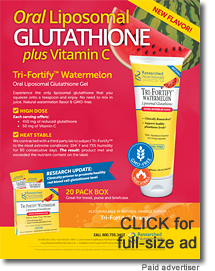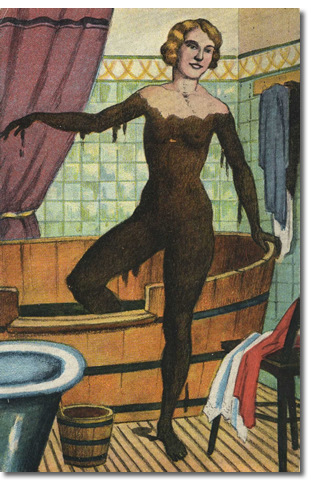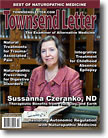Page 1, 2
The principle humic substances (HS) responsible for peat's therapeutic effects include humic acid (HA) and fulvic acid (FA). Humic acids are the most widespread natural polymers derived from biological, chemical, and microbial decomposition of organic matter (Vaškova, et al, 2011).
There is plenty of research in the area of HS; however, these are concentrated in soil science and animal husbandry with fewer studies in human medical applications. HS accounts for 80% of the total carbon in terrestrial media and 60% of the carbon dissolved in aquatic media (Peña -Médez et al, 2005). HA is considered to be the most active and important factor in peat for human and animal medicine with properties that include, "antiviral, profibrinolytic, anti-inflammatory, and estrogenic activities" (Yamada et al. 1998). One of my mentors, Finnish researcher Harry Uosukainen, attributes humic acid capable of preventing viral and bacterial activity. The mediators of inflammation, including leukotrienes, prostaglandins, and thromboxane have been shown experimentally to lose much of their activity as a result of peat therapy (Uosukainen, Pihlaja, 2006). The bulk of research on medicinal peat is conducted in Russia, Finland, Germany, and eastern European countries and often in their language, making peloid research difficult to access in North America and in the English-speaking world.
Peat peloids are often administered warm and the thermal effects upon the body are undeniable. The discussion arises: Did the heat cause the healing or was it the peloids? Research examining this question has been conducted quite extensively by many. There are numerous indications that the chemical components in peat may contribute to the clinical success of cutaneous peat treatment because several pharmacological effects have been found that cannot be attributed to the well-established physical thermal effects (Beer et al., 2003). And further, Beer and his colleagues have determined that water-soluble peat substances pass transdermally in sufficient quantities to induce a biological effect and that the "human skin possesses a selective permeability for the water-soluble fulvic and ulmic acids and derivative fraction isolated as peat extract" (Beer et al, 2003). The bacteriostatic and bactericidal activities of humic acid have a positive effect upon mucous membranes especially in the intestines and vagina (Kotenko, 2008).
Peloid therapy is renowned for its organic constituents, which are becoming of great interest to researchers. Another property of peat is its "power of sorption or of ion exchange of the peloid" (Hattori, 1963, 273). The sorption on humic acid (HA) of metals especially heavy metals such as Hg, Pb, and Cd has clinical implications in the role of detoxification of prevalent body burden (Kerndorff, H et al, 1980). The concentration of humic/humine substances in most therapeutic peat needs to be at least 30% and in most can be above 50% (Uosukainen et al, 2006; Petr et al, 2012). The most significant therapeutic components of the peat are these humic substances which contribute very important therapeutic actions such as the following:
- Estrogenic activity which supports endogenous estrogen production (Klőcking et al, 2005, 5);
- Antiviral (Coxsackie, influenza A, herpes simplex, HIV-1 and HIV-2, cytomegalovirus, vaccinia) (Klőcking et al, 2005, 6);
- Elimination of rheumatic factors as observed by Stőber (1987) with the use of Carex peat due to the large content of humine;
- Modulates inflammation (Petr et al, 2012);
- Immunomodulating (Petr et al, 2012);
- Detoxicant (Suárez M et al, 2011);
- Analgesic (Suárez M et al 2011);
- Male and female infertility (Suárez M et al. 2011).
The presence of peat lipids is "very complex since [the] lipids originate from different plant species, their chemical transformations in the soil and from microbial metabolism" (Uosukainen et al, 2006, 31). The list includes plant-derived alkanes, fatty acids, ketones, sterols, cyclic terpenes, and phenolic compounds (Uosukainen et al, 2006, 32-34). These lipids have a lengthy list of biological activities impacting health that includes anti-microbial, anti-fungal, antiviral, and anti-inflammatory activity; and they reduce edema (Uosukainen, 2006, 52).
Peat's Thermal Properties
The properties of peat peloids are fascinating. Their thermal properties enable heat retention to be prolonged for a much longer time than tap water. The peat cellulose structure is an essential factor in its thermal dynamics. Micropores make up the structure of peat and the cellulose outer structure allows peat to trap water within its cavity that maintains either hot or cold temperatures for prolonged periods. The therapeutic benefits of thermal applications have been well documented. High heat capacity, ability to retain heat, and low heat conductivity mark peat as a valuable medium. An example of this thermal property in peat is that a bath mixed with peat retains its temperature for a longer duration, the penetration of heat is deeper within the tissues, and the sensation of the temperature in a thermal peat or peloid bath feels warmer than the actual temperature.
Russian Peloids and Gynecology
The temperature and duration of peloid therapies vary greatly and determine the intensity of the treatment. Cooler temperatures are viewed as gentle, and the higher temperatures are viewed as intensive treatment. With respect to the use of peloids in gynecology, these factors are important. In this regard, allow me to acknowledge several National University of Natural Medicine (NUNM) colleagues who have focused on the use of peloids in gynecology: Dr. Alla Nicolulis (an experienced medical doctor from the Ukraine and current NUNM student), Tatiana Gorbacheva (current NUNM student), and recent graduate Dr. Maria Rechkunova-Goodson. Collectively over the last three years, we have sourced and they have translated Russian research on the topic of peloids and gynecology. We are compiling this work for a forthcoming book from NUNM press reintroducing this invaluable earth cure once again to the naturopathic community. Their research helps demystify the remarkable domain of peloids in that the preliminary data indicate that peat peloids present unique and extraordinary properties pertaining to gynecology.
 Women with gynecological disorders who are beginning peloidotherapy are most often prescribed cooler temperatures and shorter duration in their treatment plan. The benefits derived from peloid procedures include normalized endocrine reproductive system, stimulation of secretory activity of cervical and uterine glands, decreased chronic inflammatory processes, and restoration of pH balance (Tsarfis, Kiselev, 1990). Peloids have also been found to block microorganisms' virulence factors (anti-lysosome, anti-lactoferrin, anti-complement), thereby making them prone to the host's local defense factors (Vdovkin, 2007). Peloids are bacteriocidal in vaginal pathogenic flora and have restorative effects for exudative adhesions (Kolesnik, 1990). Women with gynecological disorders who are beginning peloidotherapy are most often prescribed cooler temperatures and shorter duration in their treatment plan. The benefits derived from peloid procedures include normalized endocrine reproductive system, stimulation of secretory activity of cervical and uterine glands, decreased chronic inflammatory processes, and restoration of pH balance (Tsarfis, Kiselev, 1990). Peloids have also been found to block microorganisms' virulence factors (anti-lysosome, anti-lactoferrin, anti-complement), thereby making them prone to the host's local defense factors (Vdovkin, 2007). Peloids are bacteriocidal in vaginal pathogenic flora and have restorative effects for exudative adhesions (Kolesnik, 1990).
Peloid therapy is justified in the following conditions: PID, chronic salpingoophoritis, cervical erosion, bacterial vaginosis, atrophic vaginitis, incontinence, pelvic adhesions, infertility, primary and secondary amenorrhea, ovarian dysfunction due to low estrogen, and preparation for planned pregnancy (Radzinskyi, 2011; Vdovkin, 2007).
In particular, gynecological disorders have responded favorably, and in some cases exceptionally, to peloid applications to regulate and stimulate hormonal function and restore functionality. The familiar application of peat used in balneotherapy medical spas is generally in the form of a bath, a compress, or a wrap. In studying the Russian research in patients with gynecological disorders, we found that peloids bring favorable responses (anti-inflammatory, antibacterial, immune effects, hormonal function, and improved circulation) to the pelvic area. The numerous peloid applications include vaginal and rectal tampons, "mud bras and mud underwear or briefs" applications, peloid electrophoresis (galvanic, faraday currents and ultrasound), and baths. The temperatures of the peloids that are used are completely dependent upon the patient's constitution, concomitant conditions, and the desired outcomes.
The peloid treatment is more often administered within a spa environment having mineral and thermal water, which facilitates a long, extended stay (two to four weeks). The Russian and European balneotherapy spas are usually located in pristine natural environments where the abundance of Nature is available to their clients. Clinical climatology encourages sun and air baths, which are conducted after the peloid therapy. Facilities are available for patients to sleep outdoors during the summer. Physical exercises such as excursions, swimming, stretching, and strengthening abdominal muscles are available and encouraged. Exercise improves blood circulation to the pelvic area and has far-reaching benefits. Gynecological massages performed in conjunction with the peloid treatments improve clinical outcomes.
Peloid "Bra" and "Underwear"
Peloid bra and underwear refers to the application of peat that covers the breast or the pelvic area. Peloid applications (40° to 42° C/104° to 108° F) placed on one or both breasts act reflexively to stop uterine bleeding that can be especially useful during menorrhagia. The duration of treatment is 15 to 20 minutes (Kolesnik, 1990).
For conditions involving infertility, ovarian dysfunctions, and PID, the temperatures used for the "peloid underwear" is 38 ° to 42° C/ 100° to 108° F. The duration of each treatment is the standard treatment time of 15 to 20 minutes conducted every other day for a total of 10 to 12 applications. For scars and post-surgical adhesions, higher temperatures are used and peloids are heated to temperatures 42° to 46° C/ 108° to 115° F (Kolesnik, 1990). A typical treatment plan consists of 12 to 14 procedures. In the first half of the treatment course, procedures are performed every other day; in the second half, procedures are done two days consecutively with the third day free from peloids. Although I have included temperatures in this article, I have found that there are prescription variations between clinics and sanitariums when administering peloids. "Peloids are peloids are peloids" means that different temperatures are used for different kinds of peloids. Peat requires different temperatures than clay than parafango, etc.
Peloid Vaginal Tampons
For the treatment of gynecological disorders, peloid-filled tampons were discovered by a group of Russian doctors at their Sergievskie Sanatorium in the 1920s (Vdovkin, 2007). In some of the European spas, a special applicator is used for the peloid insertion. Another method that can be improvised with equal results is using a piece of gauze [1" x 3" x 4") and placing a half of teaspoon of peat at one end and roll to form a tampon. This method, I have incorporated in my clinical practice. The peloid tampon is inserted in the evening and removed in the morning.
One Russian study cited the benefits of a peloid vaginal tampon to include bactericidal action on pathogenic flora in the vagina and a reflexive action on pelvic organs. The temperature of the peloid used for the vaginal tampon is 44° to 48 ° C/111° to 118 ° F. The recommended protocol is to apply the vaginal tampon every other day for a duration of 40 to 60 minutes with a course of treatment consisting of 10 to 12 procedures (Kolesnik, 1990). Cervical erosion and endocervicitis are treated with peloid tampons at relatively high temperatures (46° to 52° C/115° to 126° F) along with topical peloid applications (42° to 44°C / 108° to 111° F) to the pelvic area ("underwear zone"). This peloid combination treatment reduces abdominal pain, normalizes menstrual cycle, softens and dissipates fibrous adhesion, and restores normal health (Tsarfis, Kiselev, 1990). Many of the Russian papers indicated that peloid tampons worked more effectively when combined with peloid "underwear" treatment. German research has demonstrated that papilloma viral infections, which can represent the first stage of cervical cancer, have been shown to be eliminated with 80% success by means of peat tampons (Uosukainen, Pihlaja, 2006).
Electrotherapies and Peloids
The use of electrotherapies in conjunction with topical peloids ("peloid underwear") and vaginal tampons are common practices in Russia. When combining galvanic current and peloid therapy, gauze sacks are filled with peloid preheated to 38° to 42° C / 99° to 108 F and used instead of the usual hydrophilic pads. The rest of the procedure is identical to the galvanic treatment (Pamasyuk et al, 1990). Galvanization stimulates regulation of nervous and endocrine systems, and energy (Kotenko, Korchajkina, 2008).
Ultrasound used with peat increases circulation to the pelvic area and improves lymphatic flow and thereby improving tissue repair. (Kotenko, Korchajkina, 2008) When using ultrasound with peloids, the active constituents in peat can be absorbed better through the epidermal skin layer and their penetration is deeper. Another alternative method of using ultrasound is to use peloid tampons while administering the ultrasound on the lower abdomen.
The extraordinary breadth of the emerging literature about peloids and specific applications, such as peloidotherapy and gynecology, give the contemporary naturopathic physician and holistically inclined biomedicine professional pause to reconsider these old, newly rediscovered tools from Mother Earth. Peloids and especially peat are patiently waiting to be discovered in North America. These precious natural earth ingredients under our very feet are important for health outcomes in a synthetic era burdened by serious chronicity.
Peat Baths
There are many versions of a peat bath from country to country. At one end of the continuum, the Finnish bath might contain as much as 100 kg [220 lbs.] of peat in a bathtub that closely follows the contours of a human body, intended to reduce the amount of peat used. The consistency of mixture is correct if a pattern drawn on the surface remains visible for one minute (Uosukainen, Pihlaja, 2006, 67).  The peat baths used in Frantiŝkovy, Czech Republic, are at the other end of that spectrum, more conservative, the consistency much like a typical water bath with the exception that the color of the bath water is black and there may be some evidence of plant material in the bath water. The peat baths used in Frantiŝkovy, Czech Republic, are at the other end of that spectrum, more conservative, the consistency much like a typical water bath with the exception that the color of the bath water is black and there may be some evidence of plant material in the bath water.
In any case, peat baths are simple to prepare. The best peat source is available from Torf Spa (torfspa.com) who import peat from the Czech Republic and Hungary and will be soon importing sapropelic peloids from Russia. I have travelled to the two European countries and have visited the sites and companies who excavate the peat prudently and ethically. Although, there are ample peat lands in North America, especially Canada, an industry has not emerged here to produce a medicinal peat for healthcare providers.
After a day of stress and exhaustion, a peat bath is a wonderful way to end the day. Simply run a warm bath [97 ° to 99° F / 36° to 37° C]. The most relaxing bath is not hot, but rather a "neutral," i.e. the same temperature as the human body. To test the temperature of the water, place your hand in the bath and the water will feel neither hot nor cold. For a first bath, use one package of peat. It can be mixed into a bucket of warm water which is then added to the bath tub turning the bath water black.
Immerse yourself into the water and stay in the bath for 20 minutes. During your time in the bath, have some mineral water nearby for drinking. For many, the experience of their first peat bath is a sensation of overwhelming heat, and many perspire during their bath. Thus, having water nearby to drink is important.
After the bath, without showering, put on a housecoat or wrap yourself in a cotton sheet and rest in bed for about 20 to 30 minutes. If you are retiring for the night, then follow your regular routine and fall asleep. The peat bath is deeply relaxing, and sleep will come very easily. Enjoy!
Page 1, 2
References .pdf
 Sussanna Czeranko, a graduate of the Canadian College of Naturopathic Medicine, has developed an extensive armamentarium of nature-cure tools and techniques for her patients. Especially interested in balneotherapy, botanical medicine, breathing and nutrition, she is a frequent presenter and workshop leader. As curator of the Rare Books Collection at NCNM, her present projects include a twelve-book series known as The Hevert Collection: In Their Own Words, which has been published by NUNM Press. This series restores the best of the early literature from the Benedict Lust Journals for the naturopathic profession. Sussanna is the founder of The Breathing Academy, a training institute for naturopaths to incorporate a scientific model of breathing therapy called Buteyko into their practice. Her next large project is to complete the development of her new naturopathic medical spa in Manitou Beach, Canada. Sussanna Czeranko, a graduate of the Canadian College of Naturopathic Medicine, has developed an extensive armamentarium of nature-cure tools and techniques for her patients. Especially interested in balneotherapy, botanical medicine, breathing and nutrition, she is a frequent presenter and workshop leader. As curator of the Rare Books Collection at NCNM, her present projects include a twelve-book series known as The Hevert Collection: In Their Own Words, which has been published by NUNM Press. This series restores the best of the early literature from the Benedict Lust Journals for the naturopathic profession. Sussanna is the founder of The Breathing Academy, a training institute for naturopaths to incorporate a scientific model of breathing therapy called Buteyko into their practice. Her next large project is to complete the development of her new naturopathic medical spa in Manitou Beach, Canada.
|
![]()
![]()
![]()








 Sussanna Czeranko, a graduate of the Canadian College of Naturopathic Medicine, has developed an extensive armamentarium of nature-cure tools and techniques for her patients. Especially interested in balneotherapy, botanical medicine, breathing and nutrition, she is a frequent presenter and workshop leader. As curator of the Rare Books Collection at NCNM, her present projects include a twelve-book series known as
Sussanna Czeranko, a graduate of the Canadian College of Naturopathic Medicine, has developed an extensive armamentarium of nature-cure tools and techniques for her patients. Especially interested in balneotherapy, botanical medicine, breathing and nutrition, she is a frequent presenter and workshop leader. As curator of the Rare Books Collection at NCNM, her present projects include a twelve-book series known as